Unearthed tower of human skulls reveals true scale of Aztec human sacrifice
A tower of human skulls has been unearthed beneath Mexico City, throwing new light on the human sacrifices of the Aztec Empire.
Bones belonging to women and children were among hundreds found in the site of the Templo Mayor, dug up by archeologists after an 18-month investigation.
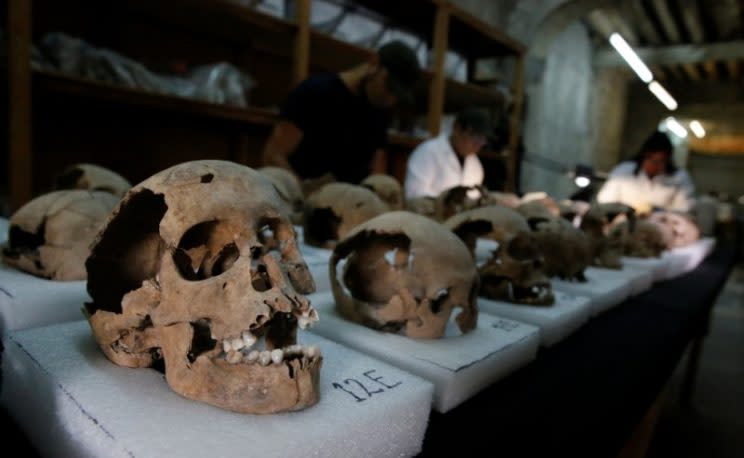
Archaeologists have found more than 650 skulls caked in lime in the temple to the god of war, sun and human sacrifice in the city, once the Aztec capital Tenochtitlan.
Founded in 1325, the city became the capital of the Aztec Empire in the 15th century, before it was captured by the Spanish in 1521.
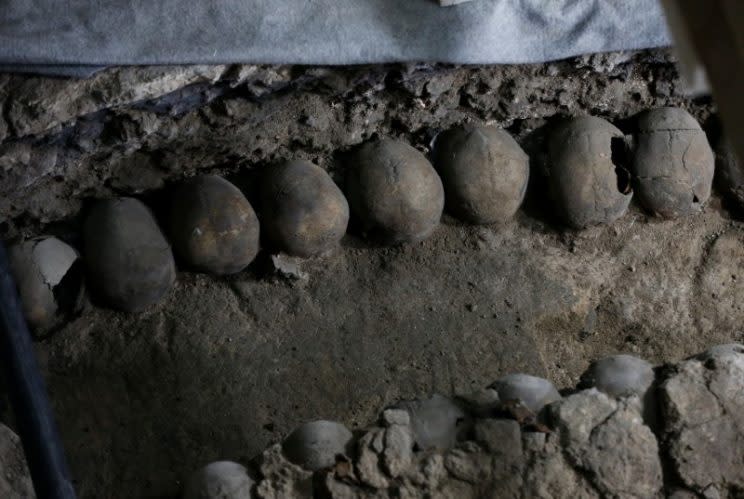
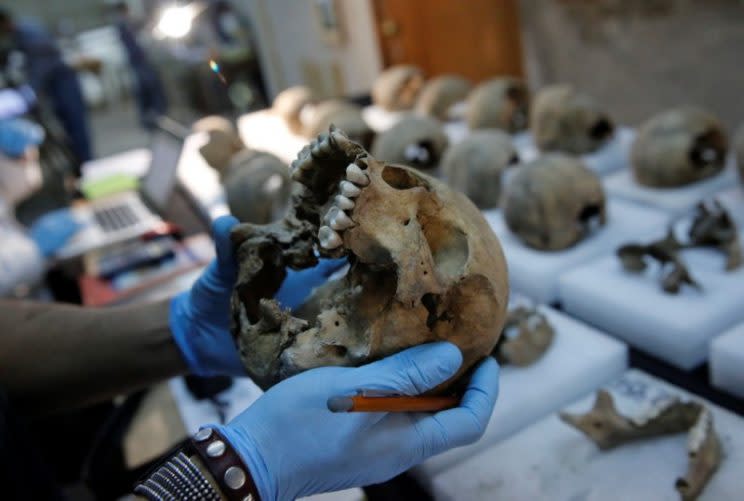
The structure is believed to be part of the Huey Tzompantli, a rack of bones which was written about by Spanish conquistadores.
Historians had previously believed the skulls were those of male warriors, but discovery of the remains of women and children has prompted a rethink about the Mesoamerican culture.
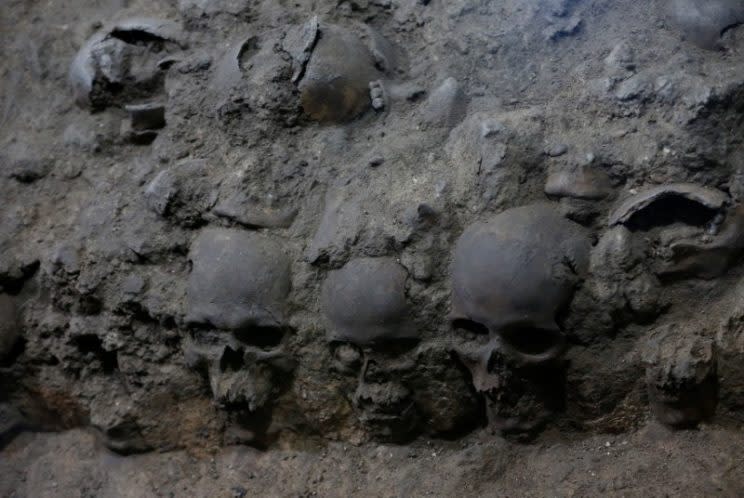
MORE: Remains of Aztec Temple Found in Mexico City
MORE: Archaeologists have found a hidden square monument within Avebury stone circle
“We were expecting just men, obviously young men, as warriors would be, and the thing about the women and children is that you’d think they wouldn’t be going to war,” said Rodrigo Bolanos, a biological anthropologist investigating the find.
“Something is happening that we have no record of, and this is really new, a first in the Huey Tzompantli,” told Reuters.
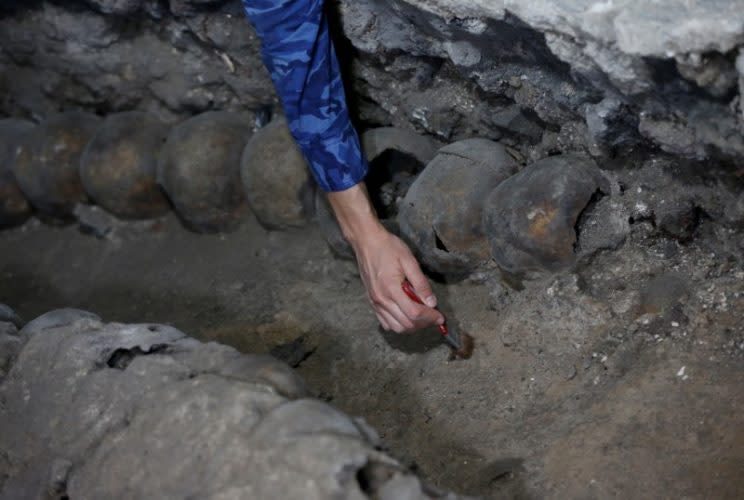
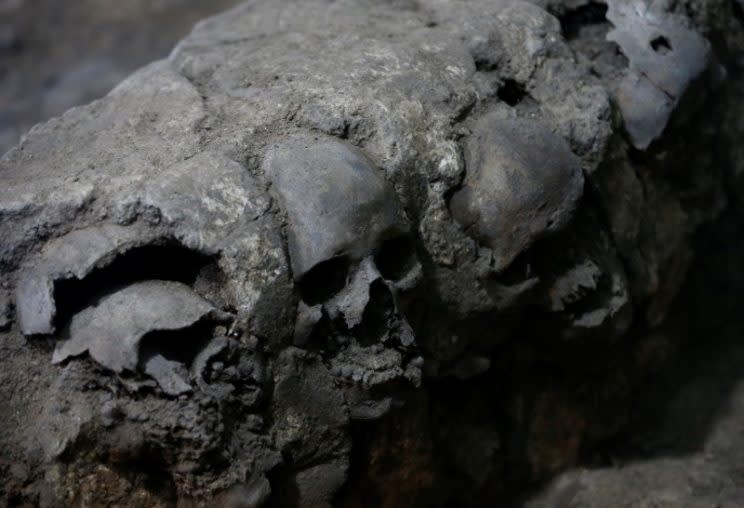
The skulls are believed to form part of the 200ft Huey Tzompantli, which stood on the corner of the chapel of Huitzilopochtli, an Aztec god.
Raul Barrera, one of the archaeologists working at the site, said the tower was certainly the same as that mentioned by Andres de Tapia, a Spanish soldier who recorded seeing tens of thousands of skulls.
Barrera said more skulls were likely to be found.
This is the second discovery in as many months. In June, an Aztec ball game court was found near this site.



